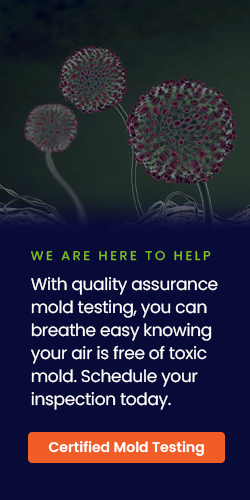Mold accumulation is a common problem in many homes, leading to various health issues if left untreated. It can also cause structural damage and decrease the value of your property. That’s why testing for and addressing mold buildup regularly and as soon as possible is crucial.
A certified mold inspection is crucial to ensure the accurate detection of mold and effective remediation. An experienced inspector can identify favorable conditions for mold growth and recommend preventing it. Proper sampling techniques and clear communication with the client are essential for success. Follow industry best practices and the IICRC-S520 Mold Standard to guarantee the best results.
Throughout this blog, you’ll better understand how to keep your family and loved ones safe from the dangers of mold.

Signs of Mold in Your Home
Mold is common in many homes, and it can often go undetected until it becomes a serious issue. That’s why everyone should be aware of the signs of mold growth in your home. This section will discuss the three main signs of mold: visible mold, musty odors, and health symptoms.
Visible Mold
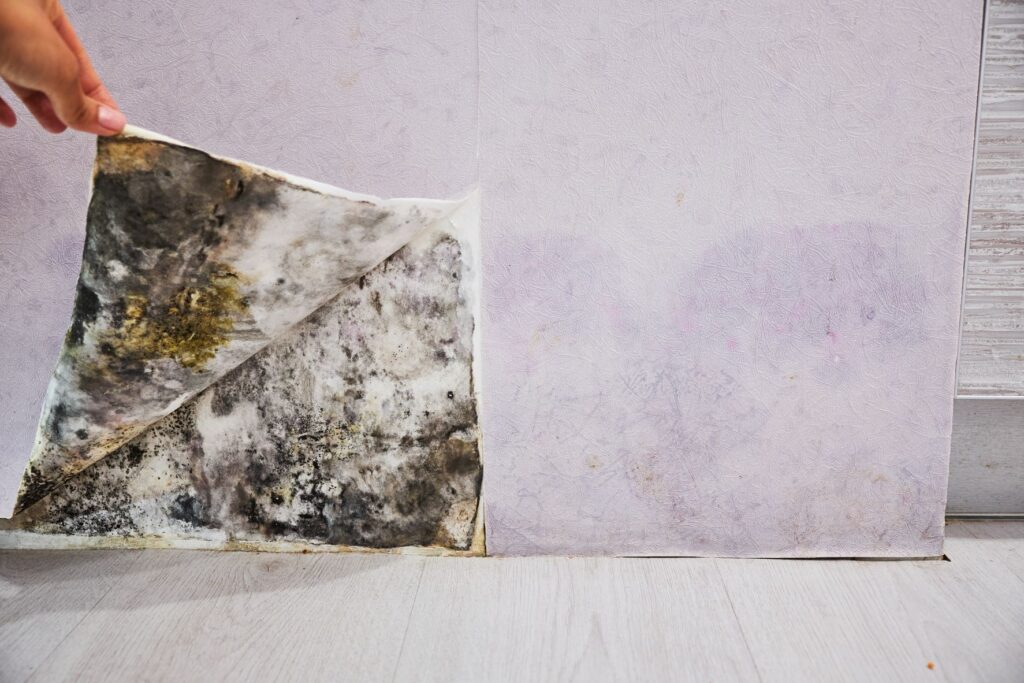
Visible mold is the most obvious sign of a mold problem. Mold can grow on any moist and organic surface, such as walls, ceilings, and floors. It can appear as black, green, brown, or white spots or patches. If you notice mold growth, it’s important to address the problem immediately. Mold can spread quickly and cause structural damage to your property.
Unpleasant Odor
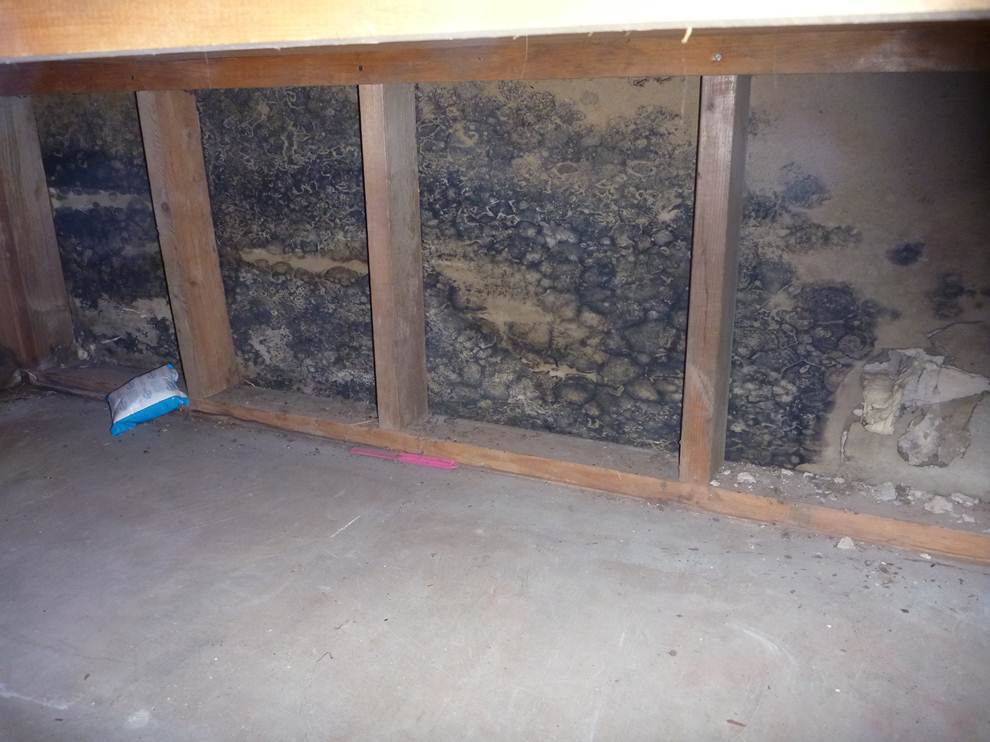
Musty odors are another sign of mold growth. Mold has a distinct musty smell, and it’s hard to miss. If you notice an earthy or damp odor, your home could be harboring mold growth. The odor may be stronger in certain areas, such as bathrooms, basements, and crawl spaces. If you notice a musty odor, it’s worth investigating whether mold is the cause.
Health Complications
Mold can also cause a variety of health problems, especially for people suffering from allergies or respiratory issues. Symptoms may include sneezing, coughing, itchy eyes, and a runny nose. If you or your loved ones experience these symptoms, it’s worth investigating whether mold is the culprit. However, other factors, such as seasonal allergies, can also cause these symptoms.
It’s essential to take action as soon as you notice any mold, as it can spread quickly and cause serious health issues, so don’t ignore the signs. The following section will discuss when to consider mold testing to ensure your home is safe and healthy.

When to Consider Mold Testing
If you’ve noticed any signs of mold in your home, such as visible growth, a musty odor, or health symptoms, it’s worth considering mold testing. However, even if you haven’t noticed any signs of mold, there are certain situations where mold testing may be necessary.
After Water Damage
If your home has experienced water damage, such as a flood or a leak, it’s important to have it tested for mold. Moisture is a leading cause of mold growth, and water damage creates the perfect environment for mold to thrive. Even if you’ve cleaned up the water, hidden mold growth may cause health problems and structural damage.
Before Buying a Home
If you’re in the market for a new home, it’s important to have it tested for mold before making an offer. Mold can be a hidden problem that sellers may not be aware of, and it can significantly decrease the value of the property. Mold testing can help you make an informed decision about the home’s condition and whether or not it’s a wise investment.

After Remediating Mold
If you’ve had mold remediation done in your home, it’s important to have it tested to ensure that all the mold has been properly removed. Even if you can no longer see or smell mold, hidden mold growth may cause health problems and structural damage.
Health Concerns
If you or anyone in your household is experiencing persistent health problems that may be related to mold exposure, it’s worth considering mold testing. A professional mold test can identify whether or not mold is present in your home and the type of mold causing the problem.
It’s vital to hire a professional mold inspector to perform the testing. They have the experience and equipment needed to accurately detect mold growth and identify the type of mold present.
Types of Mold Testing
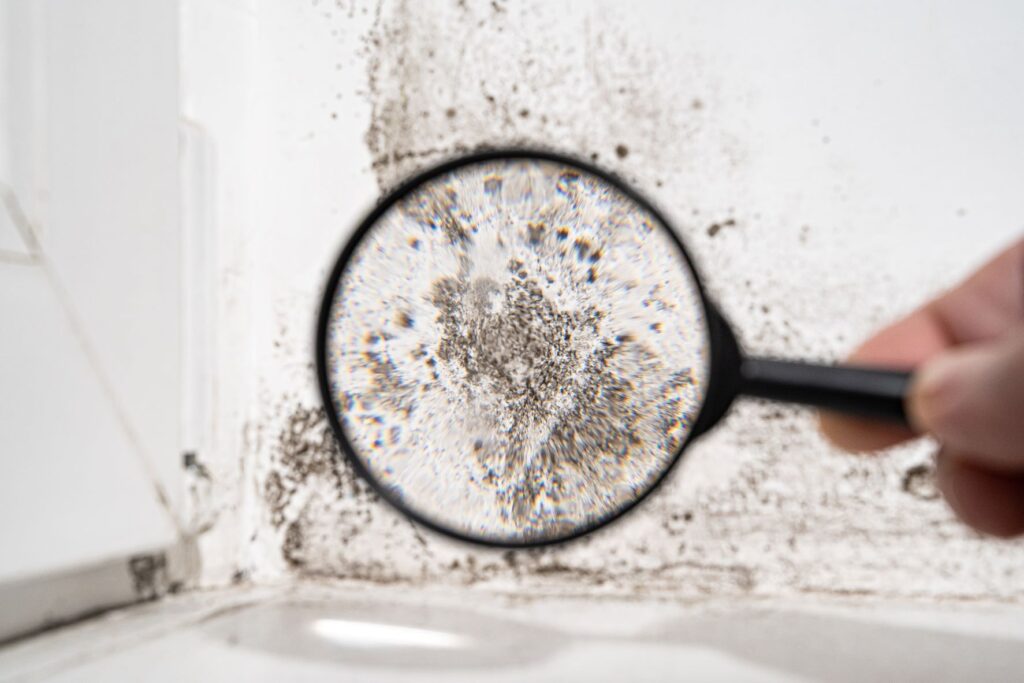
If you’ve decided to have your home tested for mold, you must understand the different types of mold testing available. Two standard categories of testing used are non-viable and viable sampling. Non-viable sampling identifies the presence of mold spores but doesn’t differentiate between live or dead spores and may not identify the specific mold species. Viable sampling cultures the sample to identify both live and dead spores but may miss heavy or sticky dead spores like Stachybotrys. In addition, non-viable sampling has a faster turnaround time, while viable sampling typically takes 7-10 days. A professional can help you understand the differences between these methods and choose the appropriate one for your situation.

Air Sampling
Air sampling is the most common type of mold testing. It involves collecting air samples from various areas of your home and analyzing them for the presence of mold spores. Air sampling can identify the type and concentration of mold spores in your home. However, it may not be able to detect hidden mold growth, and the results can be affected by various factors, such as weather and ventilation.
Surface Sampling
Surface sampling involves collecting samples from surfaces in your home, such as walls, floors, and furniture, and analyzing them for the presence of mold. Surface sampling can identify the mold type present and the mold growth extent. However, it may not be able to detect hidden mold growth, and the results can be affected by various factors, such as the type of surface and the sampling method used.
Bulk Sampling
Bulk sampling involves collecting samples of materials, such as drywall or insulation, and analyzing them for the presence of mold. Bulk sampling can identify the mold type present and the mold growth extent. However, it can be invasive and may damage the material being sampled.
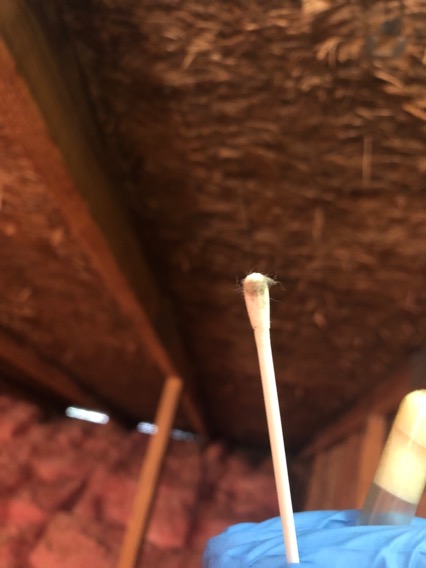
Culture Testing
Culture testing involves collecting a sample of mold growth and growing it in a laboratory. This can identify the specific type of mold present and determine its growth rate. However, it can take several days to get the results, and the process can be expensive.
DNA Testing
DNA testing involves analyzing a sample of mold for its DNA signature. This can identify the specific type of mold present and determine its growth rate. DNA testing is a newer technology and may not be available in all areas.
It’s best to hire a professional mold inspector for accurate results. They have the experience and equipment such as digital moisture meters, hygrometers, infrared cameras, and borescopes, to detect and identify mold growth, and DIY kits may be unreliable. When in doubt, hire a professional.
Mold Testing Cost
The cost of mold testing can vary depending on the type of test and the extent of the testing required. Professional mold testing can cost anywhere from $300 to $600, with some tests costing up to $1,000 or more. The cost can be affected by various factors, such as the size of your home, the number of samples needed, and the type of test required.
Air sampling is typically the least expensive type of test, with costs ranging from $150 to $300 per sample. Surface sampling can cost between $50 to $150 per sample, while bulk sampling can cost between $50 to $250 per sample. Culture and DNA testing are the most expensive, ranging from $100 to $500 per sample.
DIY mold testing kits are usually less expensive than professional testing, ranging from $10 to $150. However, the accuracy of these kits may not be as reliable as professional testing, and the results may not be as comprehensive.
When considering mold testing, weighing the cost against the potential health risks and property damage mold growth can cause is essential. It’s best to consult a professional mold inspector to determine the appropriate testing methods for your situation and get an accurate cost estimate.
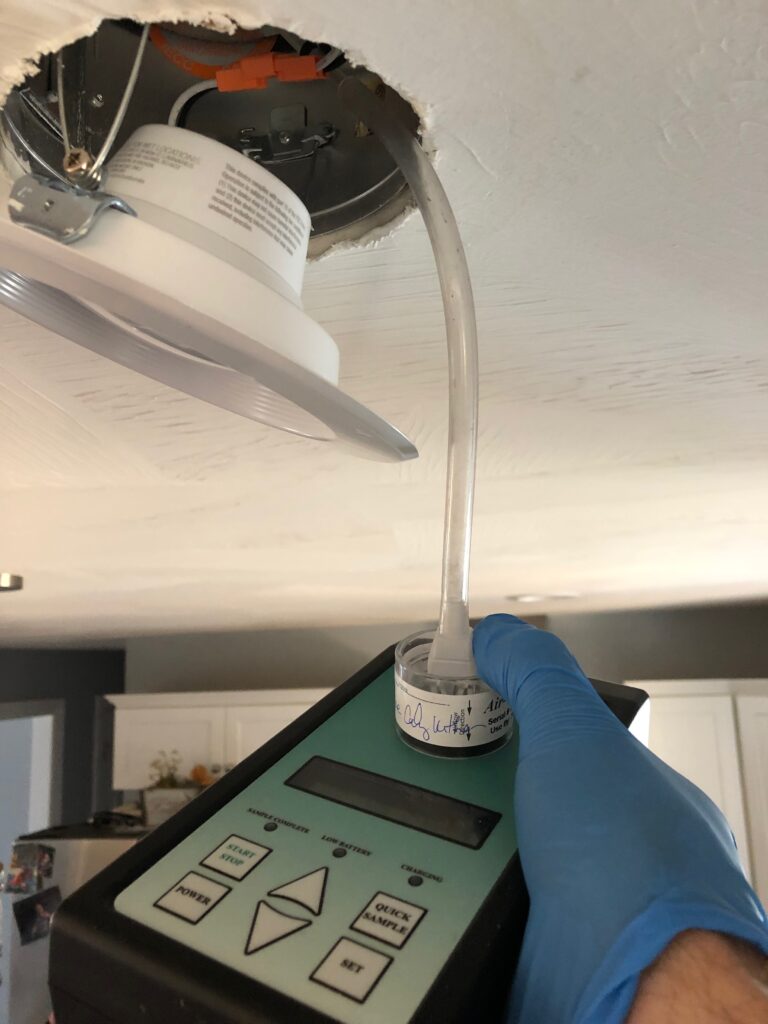
What to Expect During Mold Testing
When hiring a mold specialist, look for an independent and unbiased mold inspection company to avoid potential conflicts of interest. For example, avoid companies affiliated with remediation services or solicit remediation companies. Instead, look for certifications and credentials, such as those from the American Council for Accredited Certification (ACAC). These demonstrate that the inspector has the knowledge and experience to accurately detect mold growth and identify the type of mold present. Selecting an independent and certified mold inspection company ensures impartiality and accurate results.
After hiring a professional mold inspector to perform mold testing, you may wonder what to expect during the process. The following are some common steps that are typically involved in mold testing:
- Initial consultation: The mold inspector will conduct an initial consultation to assess your concerns and identify any potential areas of mold growth in your home.
- Visual inspection: The inspector will visually inspect your home for any signs of mold growth, such as visible mold or water damage.
- Testing: Depending on the type of test selected, the inspector may take air, surface, or bulk mold samples from your home.
- Lab analysis: The samples will be sent to a laboratory for analysis to determine the type and extent of mold growth present.
- Interpretation of results: Once the lab results are available, the inspector will interpret them and provide you with a report detailing their findings.
- Recommendations: The inspector may suggest mold remediation and prevention
based on the results.
The mold testing process typically takes a few days to a week, depending on the type and number of samples taken and the lab turnaround time. The inspector will provide detailed instructions on preparing for the testing and what to do after the testing is complete. Follow these instructions carefully for accurate results and prevent mold growth in your home.
Understanding Mold Test Results
After mold testing and the samples are analyzed, you will receive a report from the inspector detailing the results. Understanding what the results mean and how to interpret them is essential. Some key things to look for in your mold test results include:
Type of Mold
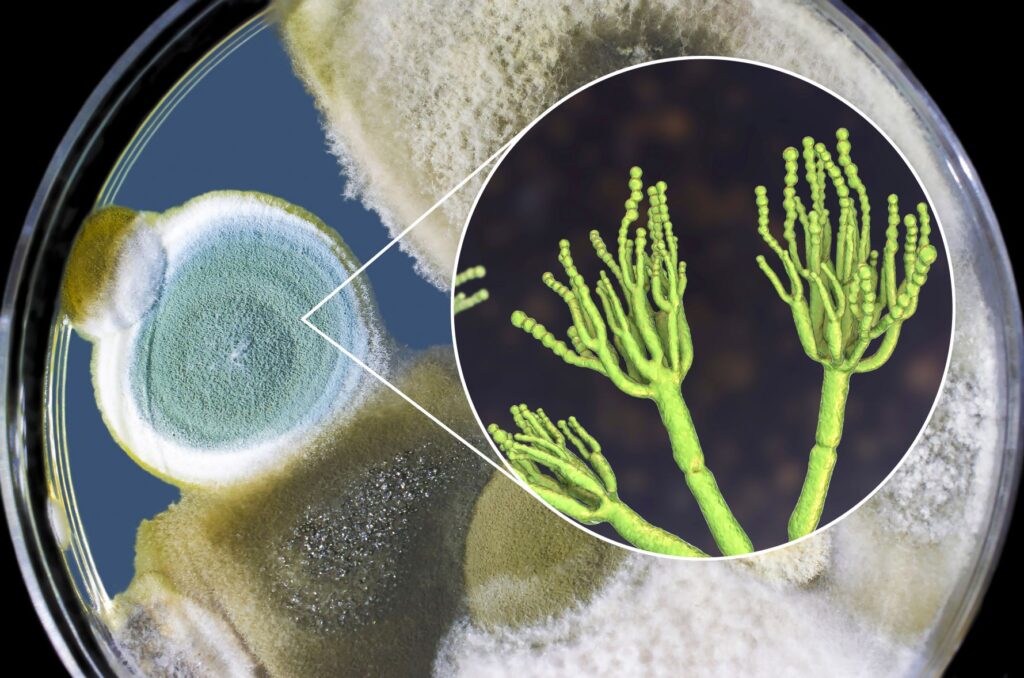
The report should identify the type of mold present in your home. Different types of mold can pose different health risks and may require separate remediation methods.
Level of Mold Growth
The report should also indicate the level of mold growth in your home, usually measured in spores per cubic meter of air. High levels of mold growth can indicate a serious mold problem that requires immediate attention.
Recommended Actions
Based on the results, the inspector may recommend mold remediation and prevention.
Following these recommendations carefully is important to ensure the mold is properly removed and to prevent future growth.
Please note that some mold growth is normal and not cause for concern. Seeing mold does not necessarily mean a health hazard is present. However, if you or your family is experiencing symptoms of mold exposure, such as allergies or respiratory problems, it’s important to take the necessary steps to address mold growth in your home.
If you have any questions or concerns about your mold test results, don’t hesitate to contact your mold inspector for clarification. They can provide additional information and guidance on addressing mold issues in your home.
Mold Remediation

What Is Mold Remediation?
If your mold test results indicate a problem with mold growth in your home, it’s important to act promptly to remediate the issue. Mold remediation is removing mold from your home and preventing it from returning. Here are some steps to take to remediate mold growth in your home:
- Identify and repair the source of moisture: Mold growth is often caused by excess
moisture in the home, such as from a leaky roof or plumbing issue. Identifying and
repairing the source of moisture is critical to preventing future mold growth. - Contain the affected area: To prevent mold spores from spreading throughout your
home, contain the affected area. This may involve sealing off doors and windows and using plastic sheeting to create a barrier around the affected area. - Remove the mold: Depending on the extent of mold growth, you may be able to remove it yourself using household cleaners and a scrub brush. However, growth is extensive or in hard-to-reach areas, it’s best to hire a professional mold remediation company to handle the job.
- Dispose of contaminated materials: Any materials contaminated with mold, such as carpeting or drywall, should be carefully disposed of to prevent further contamination.
- Clean and dry the affected area: Once the mold is removed, thoroughly clean and dry the affected area to prevent future mold growth.
- Test for mold again: After remediation is complete, it’s important to have your home re-tested for mold to ensure that all mold has been properly removed.
Mold remediation can be complex and time-consuming. If you’re not comfortable handling the job yourself, it’s best to hire a professional mold remediation company to ensure the job is done properly. Additionally, it’s crucial to prevent future mold growth, such as maintaining proper ventilation and keeping your home dry and moisture-free.
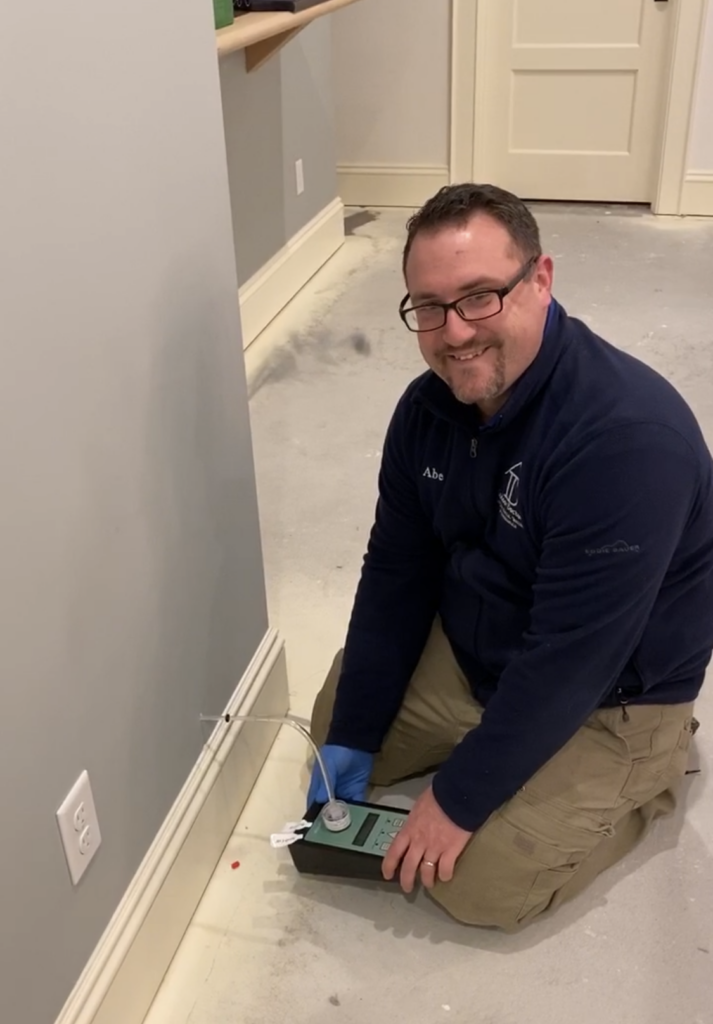
Hire a Professional Mold Testing Service
Mold testing is essential in ensuring a healthy living environment, and IndoorDoctor can help you achieve that. Our professional mold inspectors have the experience and equipment needed to accurately detect mold growth and identify the type of mold present.
If you suspect mold growth in your home or are experiencing symptoms associated with mold exposure, contact a professional for mold testing. Don’t wait until it’s too late to address mold growth in your home. Instead, contact IndoorDoctor today to schedule your mold testing or remediation services and ensure a healthy living environment for you and your family.
Sources:
- EPA. (2021). Mold. Retrieved from https://www.epa.gov/mold
- CDC. (2019). Mold. Retrieved from https://www.cdc.gov/mold/default.htm
- American Industrial Hygiene Association. (2016). The Facts About Mold. Retrieved from
https://aiha-assets.sfo2.digitaloceanspaces.com/AIHA/resources/FactsAboutMold.pdf - Environmental Health Perspectives. (2007). Mold Testing: A Comparison of Three
Methods. Retrieved from https://ehp.niehs.nih.gov/doi/full/10.1289/ehp.115-a196 - Consumer Reports. (2017). Mold Testing Kits. Retrieved from
https://www.consumerreports.org/cro/mold-testing-kits/buying-guide/index.htm - Indoor Air Quality Association. (2021). Mold Remediation Guidelines. Retrieved from
https://iaqa.org/wp-content/uploads/Mold-Remediation-Guidelines.pdf - Centers for Disease Control and Prevention. (2021). Mold Prevention Strategies and
Possible Health Effects in the Aftermath of Hurricanes and Major Floods. Retrieved from
https://www.cdc.gov/mmwr/preview/mmwrhtml/rr5508a1.htm - American Lung Association. (2021). Mold in the Home. Retrieved from
https://www.lung.org/clean-air/at-home/indoor-air-pollutants/mold-in-the-home




